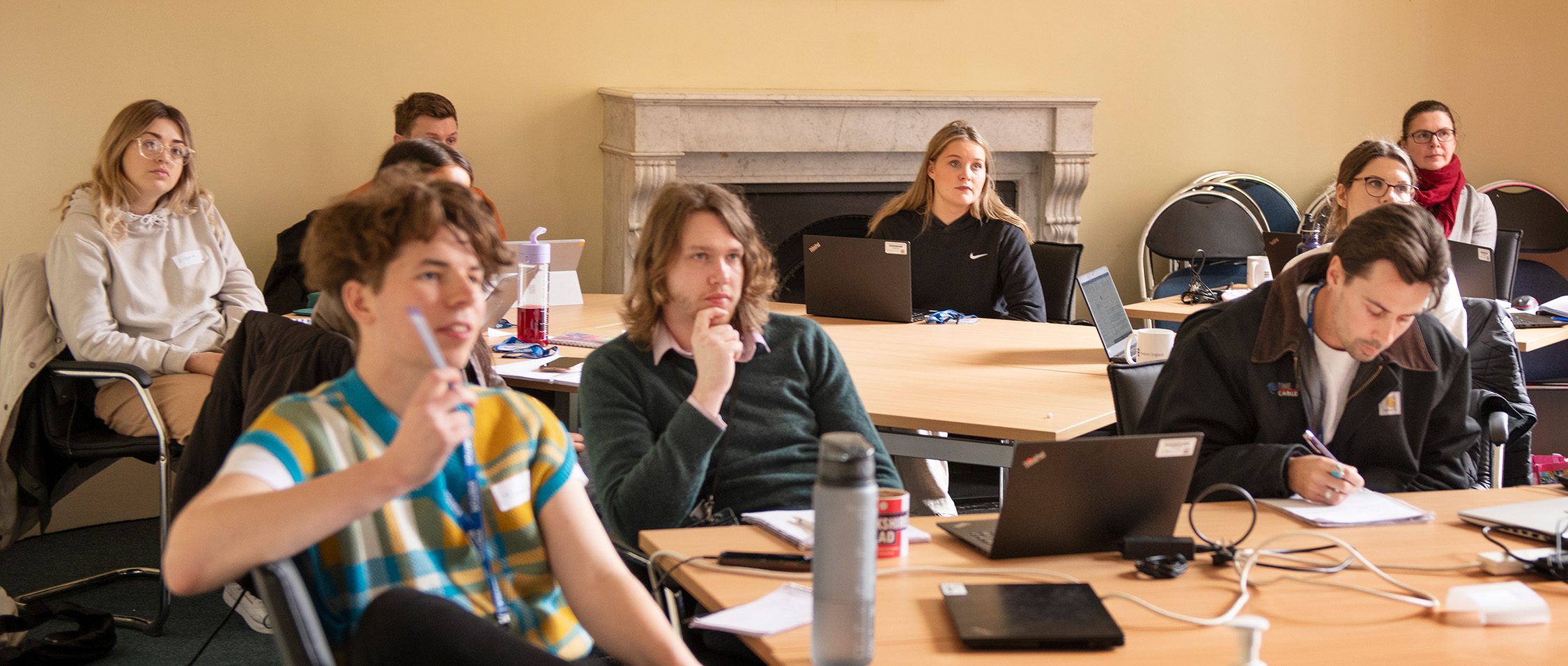Employment, Volunteering, Education and Training
Part of the Heritage Counts series. 5 minute read.
Through the 'Employment, Volunteering, Education and Training' theme, Heritage Counts compiles statistics on employment by local authorities in planning and conservation, heritage attractions, as well as local authorities’ expenditure on heritage.
It brings together statistics on volunteering in heritage, young people’s engagement in heritage through their choice of subjects at school, students undertaking degrees in relevant subjects, and participation in heritage training schemes.
Local Authority employment
The Local Authority Staffing Survey is an annual survey funded by Historic England and delivered by Essex Place Services in association with the Association of Local Government Archaeological Officers (ALGAO). It is a survey of archaeology and conservation teams in local authorities in England, and teams not attached to authorities. The survey is carried out with a question set adapted from the Heritage Labour Market Intelligence Toolkit (2019).
Historic Environment employment in Local Authorities continues to decline
- The 2022 survey of Local Authorities demonstrates that there were an estimated 820 conservation area and archaeology employees in 2022, a 3.65% increase between 2020 and 2022. In actual numbers, this constitutes an increase of 29 employees
- Previous surveys show that between 2006 and 2018, the historic environment staffing in Local Authorities declined dramatically by 35%. Due to methodology changes, it is not possible to compare data from 2020 onwards with previous years
Total Historic Environment Staff, 2006 to 2018 and 2020 to 2022
There have been significant changes in Historic Environment staff within Local Authorities
Figure EMP 2.1a – A pictorial chart showing that between 2006 to 2018, Local Authorities saw a drop in the number of Historic Environment staff. However, between 2000 and 2022, this number saw a small increase. Source: Local Authority Staffing Survey, 2022.
Regional changes to Historic Environment staff numbers
Figure EMP 2.1b – A line graph showing the regional changes to Historic Environment staff numbers, including a total for England for 2006 to 2018. Click on the second tab to see these figures for 2020 to 2022. If you click the legend, you can filter by region. Source: Local Authority Staffing Survey, 2022.
Heritage volunteering
The Community Life Survey (CLS) provides Official Statistics on issues that are key to encouraging social action and empowering communities, including volunteering, charitable giving, community engagement, well-being and loneliness.
- According to the CLS survey, 5% of survey respondents had participated in formal or informal volunteering for the heritage sector in the last 12 months
- Across all sectors, 34% of respondents (approximately 16 million people in England) had taken part in either formal or informal volunteering at least once a month in 2021/22. This is a decrease from rates in 2020/21 (41%) and is the lowest recorded by the CLS for this measure
Distribution of heritage volunteers by gender and age, 2021 to 2022
Over 50% of heritage volunteers are male and over 50
Figure EMP 2.2a – A doughnut graph showing the percentages of different genders and ages (on a separate tab) within the volunteer pool. Source: Community Life Survey.
Distribution of heritage volunteers by region, 2021 to 2022
The South East region has the largest percentage of volunteers working in the heritage sector
Figure EMP 2.2b – A bar chart showing the distribution of heritage sector volunteers across 9 regions in England by percentage. Source: Community Life Survey.
Volunteering in national heritage organisations and events
The heritage sector is heavily dependent on the contribution made by volunteers as demonstrated by the volunteering information shared from the National Trust and the English Heritage Trust each year.
Since 2014, reports are available on the thousands of local volunteers of Heritage Open Days, England's largest community-led festival of history and culture held every year in September.
Volunteer numbers from 2018/19 to 2021/22
There have been losses and gains in volunteers in the past 3 years
Figure EMP 2.3 – The bar chart below shows the losses and gains in volunteer numbers (in %) for 3 major organisations. Source: National Trust, English Heritage, Heritage Open Days.
- Between 2018/19 and 2021/22, the number of volunteers with the National Trust and with Heritage Open Days declined by 12% and 32% respectively. This is expected to be down to the COVID-19 pandemic and resulting public health restrictions.
- Evidence from the English Heritage Trust, on the other hand, demonstrates an increasing volunteer trend despite the COVID-19 restrictions, with volunteer numbers increasing by 42% since 2018/19.
Number of students (higher education, GCSE/A level)
Heritage Counts collates data on the number of students who are undertaking studies related to the historic environment. These figures can be used to assess the potential future workforce for the historic environment.
Student numbers studying topics related to the Historic Environment
Figure EMP 2.4a – An infographic showing the increase and decrease of numbers (%) of students studying historic environment subjects. Source: Department of Education.
Figure EMP 2.4b – A line graph showing student numbers related to topics affiliated to the Historic Environment shown as a time series (%).
- In 2022, 47% of pupils at the end of key stage 4 attempted a history GCSE, compared to 32% in 2008
- The number of students sitting a history A Level increased, as a proportion of all A level students, from 5.7% in 2008 to 7.4% in 2022
- On the other hand, the proportion of higher education students studying topics related to the historic environment has declined slightly, from 5.2% of all students in 2008 to 4.3% in 2021 to 4.1% in 2022
-
Employment, Volunteering, Education and Training
Spreadsheet of the raw data. It is our aim to help improve the usability, accessibility and machine-readability of statistical spreadsheets, please bear with us whilst we make these improvements.





